
Having strong balance is important no matter your age
Balance is an integral part of daily life at any age but is often considered a problem only for seniors! Poor balance can significantly impact our ability to manage day to day activities, participate in hobbies, or play sports. Luckily, in many cases balance can be improved with exercise and practice.
You are balancing more often than you think!
We rely on our nervous system to control our balance and stability requirements at rest, with voluntary or planned movements, like reaching for something, and especially during involuntary or unplanned movements, like tripping over a curb. Just prior to a voluntary movement, muscles in our body are activated to “prepare” for the movement and create the necessary adjustments in posture to minimize disturbances to our stability. Those same muscles also quickly and automatically react to unexpected or unplanned movements. These corrective responses restore stability, prevent falls, and create protective reactions to cushion a fall. You are balancing more often than you think!
Focusing on balance at a young age may prevent injuries as an adult, but know that you’re never too old to work on balance and stability! Most people will think of balance work as being useful for activities such as yoga, pilates, dance, and general fall prevention. But balance can also improve performance for runners, lifters, team sports and typical activities of daily living like walking and taking the stairs without holding onto a railing. Whether you are walking through the grocery store collecting items from the shelves or playing a sport, you are frequently shifting from one foot to another and reaching outside your base of support – in other words – you’re balancing!
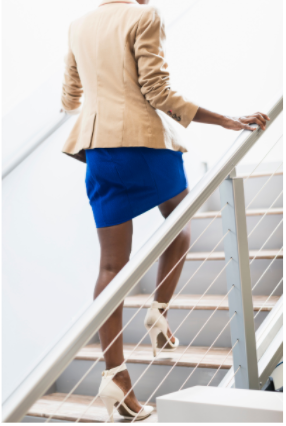
How does balance work?
Our brains integrate information from the visual system , the vestibular system in our inner ear , and the proprioceptive system found all over our bodies to maintain our balance.
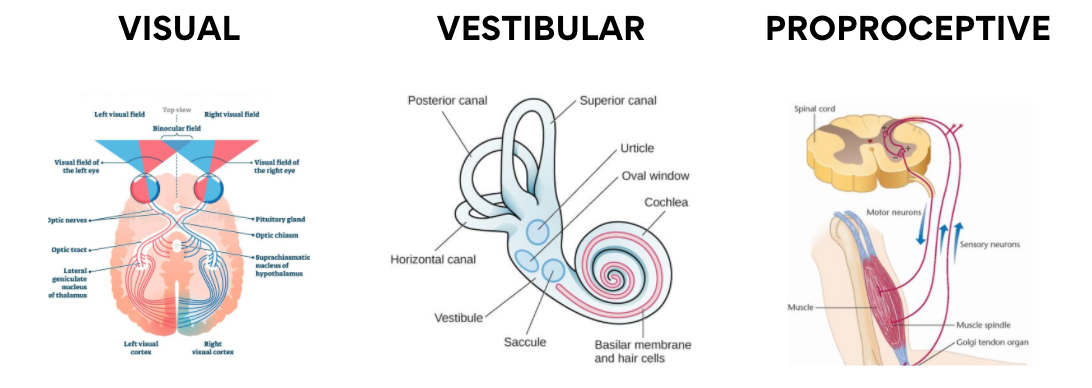
The visual system begins with the eyes that take inventory of our surrounding environment and transmit that information to the brain to be processed. Objects in our field of vision will become larger as we move closer or smaller as we move farther away. This means that we know ahead of time if there’s an obstacle in our way or a surface change like different types of flooring and ramps or stairs. Just like standing on one foot is more challenging than standing on two feet, the same can be said for trying to balance with your eyes closed.
The vestibular system is made up of tiny structures inside the ear that are responsible for telling the brain the position of our heads . It allows us to know if we’re moving, in which direction we’re moving (forwards, backwards, up, down)as well as if we’re accelerating, speeding up, or decelerating, slowing down. If our visual system and our vestibular system are telling our brain different things then we can feel unsteady, dizzy, or lose balance
The proprioceptive system includes sensory receptors in the muscles, skin, and joints to tell the brain the position of our bodies and limbs. This is how you are able to tell if your knee is bent, elbow is straight, or hand is open without looking at it. The sensory receptors of our feet become especially important in balance and are responsible for shifting our weight when we stand on one leg or tossing our arms out to maintain stability.
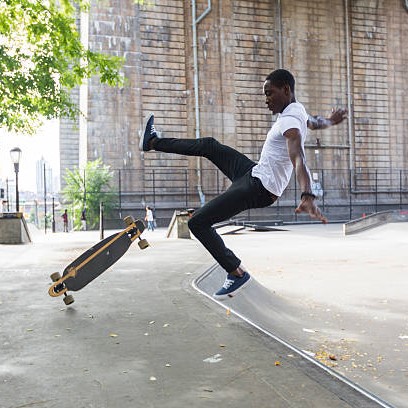
There are three ways our bodies maintain balance
The ankle strategy, hip strategy, and stepping strategy are used to prevent us from losing our balance.
Most of the time these movements are happening involuntarily or without us making a conscious decision to do them. The strength of the disturbance causing us to lose balance as well as our own level of stability determines which of these three approaches we use For example, when walking on an uneven surface you may feel your ankles shifting as you walk to make sure you don’t fall – this is known as ankle strategy. It is important to maintain ankle stability, especially following an injury, with exercise! Hip strategy occurs when a larger force challenges our balance, like when reaching for something far away, where our weight transfers at the hip to prevent a fall. The final strategy is taking a step when we are no longer able to stay within our base of support such as tripping over something, bumping into someone, or trying to stand on a moving bus.
Will my balance change as I get older?
Just like decreased strength or range of motion needs to be rehabilitated after an injury or surgery, the same can be said for balance. If one’s balance does not return to normal it can
contribute to poor stability which has the potential to lead to further injury. Most of the time people will benefit from balance training on both the injured and uninjured sides. As is true for many other parts of our bodies, the sensory receptors responsible for balance change with age, so it is important to maintain their power with exercise , such as dancing, tai chi, or active video games to limit decreases in balance, stability, and postural control.
It is important to note that due to the complexity of the systems we’ve just discussed, changes in balance and stability can be due to a number of reasons and are common in conditions such as Parkinson’s, ALS, MS, and following a stroke or brain injury. If you or someone you know is experiencing increased dizziness or feels unsteady it is best to consult your doctor.
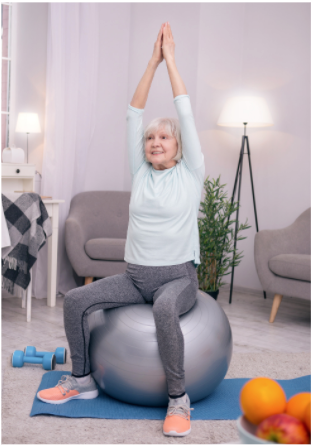
Tips to decrease risk of falls at home
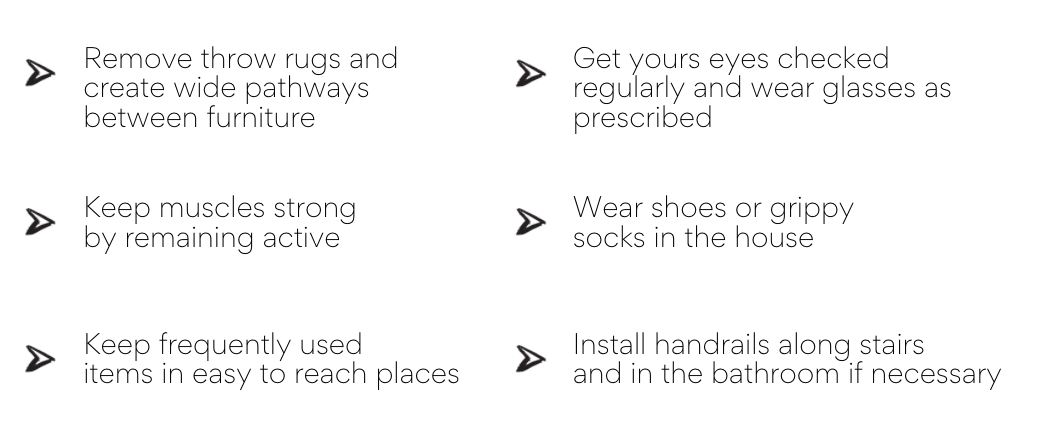
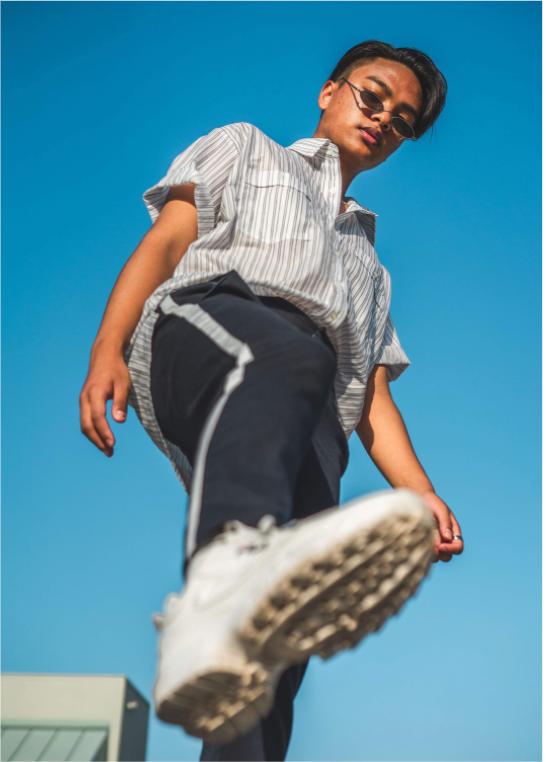
Incorporating balance into everyday life is the best way to improve
You already know that standing on one leg is more difficult than standing with your feet far apart. This is because a narrower base of support challenges our balance. Small tasks like preparing meals, brushing your teeth, and folding laundry can be done while in various positions to work on balance at the same time. Start with feet hip width, then progress to feet together, one in front of the other, and then finally standing on one leg ! If you find yourself sitting for long periods of time at home or or work, consider switching your chair for an exercise ball to work on your balance while seated.
Challenge your balance at the gym
Changing your position during a workout by sitting, kneeling, half-kneel, standing, split stance, or single leg will not only make you stronger but will also improve the three systems that are responsible for balance . To increase the stability requirements even more you can try holding a weight in just one hand instead of both or combining multiple upper and lower body movements together
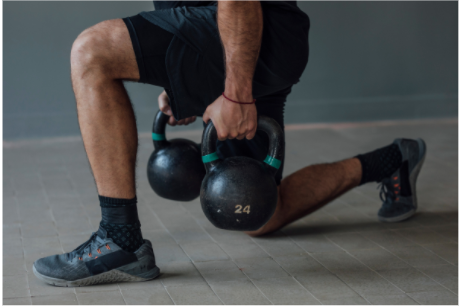
Looking for a specific
exercise plan just for you?
Speak to your physiotherapist today!
